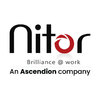
i
Filter interviews by
Optiv Security India Private Limited Interview Questions and Answers
10 Interview questions
To build a system, I would follow a structured approach focusing on requirements, architecture, development, testing, and deployment.
1. Gather Requirements: Collaborate with stakeholders to understand needs. Example: Conduct interviews with users to gather feature requests.
2. Design Architecture: Choose appropriate architecture (e.g., microservices, monolithic). Example: Use microservices for scalability in a larg...
Implementing a cache involves storing frequently accessed data for quick retrieval, improving performance and reducing latency.
Choose a caching strategy: in-memory (e.g., Redis, Memcached) or disk-based (e.g., file system cache).
Define cache expiration policies (e.g., time-based, size-based) to manage stale data.
Implement cache invalidation mechanisms to ensure data consistency (e.g., on data update).
Use a suitabl...
Recently, I managed a phishing incident that targeted our organization, leading to a comprehensive response and mitigation strategy.
Identified a phishing email that bypassed our filters, targeting employees with a fake login page.
Conducted a thorough investigation to assess the impact and identify affected accounts.
Implemented immediate measures, including password resets and user training on recognizing phishing ...
Analyzing customer feedback to improve product features and enhance user satisfaction.
Collect feedback through surveys and reviews to identify common pain points.
Use sentiment analysis to gauge overall customer satisfaction.
Prioritize feature requests based on frequency and impact on user experience.
Example: A software company may find users want a dark mode feature.
Implement changes and track user engagement metr...
Mitre attack is a framework for identifying and categorizing common attack techniques used by adversaries.
Mitre attack provides a standardized way of describing and communicating about cyber threats.
It includes a list of tactics and techniques used by attackers, as well as examples of real-world attacks.
The framework is used by security professionals to assess their organization's security posture and identify are...
Cyber attack kill chain is a framework that describes the stages of a successful cyber attack.
The kill chain consists of several stages including reconnaissance, weaponization, delivery, exploitation, installation, command and control, and actions on objectives.
Each stage represents a step in the attacker's process and can be used to identify and prevent attacks.
For example, in the reconnaissance stage, attackers ...
Key man problem in cybersecurity refers to the risk of a single person having too much access or knowledge, making them a single point of failure.
Key man problem arises when a single person has access to critical systems or information
If that person leaves or is unavailable, it can cause significant disruption or security breaches
This can be mitigated by implementing proper access controls and knowledge sharing am...
Service-oriented solutions focus on continuous monitoring and response, while product-oriented solutions rely on implementing security measures through hardware and software.
Service-oriented solutions involve ongoing monitoring of systems and networks to detect and respond to threats in real-time.
Examples of service-oriented solutions include managed security services, threat intelligence platforms, and security i...
Cross site scripting is a type of security vulnerability that allows attackers to inject malicious scripts into web pages viewed by other users.
Cross site scripting (XSS) occurs when an attacker injects malicious scripts into web pages viewed by other users.
Lateral movement in an attack scenario involves an attacker moving horizontally across a network to gain access to different systems.
Attackers can use lateral ...
Nat behavior while accessing Google is to search for information, browse websites, and possibly interact with ads.
Typing search queries in the search bar
Clicking on search results to visit websites
Interacting with ads displayed on the search results page
Optiv Security India Private Limited Interview Experiences
13 interviews found
I appeared for an interview in May 2025, where I was asked the following questions.
- Q1. Will ask you to create PPT on technical points by Manager or Sr. Manager
- Q2. Management level questions by Sr. Director.
Interview Preparation Tips
(2 Questions)
- Q1. What is the security incident you have worked on recently
- Ans.
Recently, I managed a phishing incident that targeted our organization, leading to a comprehensive response and mitigation strategy.
Identified a phishing email that bypassed our filters, targeting employees with a fake login page.
Conducted a thorough investigation to assess the impact and identify affected accounts.
Implemented immediate measures, including password resets and user training on recognizing phishing attem...
- Q2. Usecase you know
- Ans.
Analyzing customer feedback to improve product features and enhance user satisfaction.
Collect feedback through surveys and reviews to identify common pain points.
Use sentiment analysis to gauge overall customer satisfaction.
Prioritize feature requests based on frequency and impact on user experience.
Example: A software company may find users want a dark mode feature.
Implement changes and track user engagement metrics p...
(1 Question)
- Q1. What is cross site scripting? how does lateral movement work in attack scenario?
- Ans.
Cross site scripting is a type of security vulnerability that allows attackers to inject malicious scripts into web pages viewed by other users.
Cross site scripting (XSS) occurs when an attacker injects malicious scripts into web pages viewed by other users.
Lateral movement in an attack scenario involves an attacker moving horizontally across a network to gain access to different systems.
Attackers can use lateral movem...
(1 Question)
- Q1. Scenario based question what type of alerts you have worked in previous organisation
(1 Question)
- Q1. Where you see yourself in next five years
- Ans.
In five years, I envision myself as a skilled SOC Analyst, leading initiatives to enhance cybersecurity and mentoring junior analysts.
I aim to deepen my expertise in threat detection and incident response, possibly obtaining certifications like CISSP or CEH.
I see myself taking on leadership roles, guiding a team of analysts to improve our security posture and response strategies.
I plan to contribute to the development ...
(2 Questions)
- Q1. Tell me about your self
- Q2. Roles and responsibilities
I applied via Campus Placement

Cant share for confidential reasons
Cant share for confidential reasons sorry
(1 Question)
- Q1. Cyber security, compliance, risk management
(1 Question)
- Q1. Cyber security risk management HR questions

(2 Questions)
- Q1. Data Cannot be disclosed at this moment
- Q2. Data cannot be disclosed at this time
(1 Question)
- Q1. This could be an inappropriate question to answer
Interview Preparation Tips
(1 Question)
- Q1. Nat behaviour while accessing Google
- Ans.
Nat behavior while accessing Google is to search for information, browse websites, and possibly interact with ads.
Typing search queries in the search bar
Clicking on search results to visit websites
Interacting with ads displayed on the search results page

(2 Questions)
- Q1. What is cyber attack kill chain ?
- Ans.
Cyber attack kill chain is a framework that describes the stages of a successful cyber attack.
The kill chain consists of several stages including reconnaissance, weaponization, delivery, exploitation, installation, command and control, and actions on objectives.
Each stage represents a step in the attacker's process and can be used to identify and prevent attacks.
For example, in the reconnaissance stage, attackers gathe...
- Q2. What is Mitre attack
- Ans.
Mitre attack is a framework for identifying and categorizing common attack techniques used by adversaries.
Mitre attack provides a standardized way of describing and communicating about cyber threats.
It includes a list of tactics and techniques used by attackers, as well as examples of real-world attacks.
The framework is used by security professionals to assess their organization's security posture and identify areas fo...
I appeared for an interview before Jun 2024, where I was asked the following questions.
- Q1. How do you implement a cache?
- Ans.
Implementing a cache involves storing frequently accessed data for quick retrieval, improving performance and reducing latency.
Choose a caching strategy: in-memory (e.g., Redis, Memcached) or disk-based (e.g., file system cache).
Define cache expiration policies (e.g., time-based, size-based) to manage stale data.
Implement cache invalidation mechanisms to ensure data consistency (e.g., on data update).
Use a suitable dat...
- Q2. Given a scenario, how do you plan to build a system
- Ans.
To build a system, I would follow a structured approach focusing on requirements, architecture, development, testing, and deployment.
1. Gather Requirements: Collaborate with stakeholders to understand needs. Example: Conduct interviews with users to gather feature requests.
2. Design Architecture: Choose appropriate architecture (e.g., microservices, monolithic). Example: Use microservices for scalability in a large app...
I applied via Naukri.com and was interviewed before Jan 2023. There was 1 interview round.
(1 Question)
- Q1. Network and Cyber security basic, Phishing
Top trending discussions






Optiv Security India Private Limited Interview FAQs
Tell us how to improve this page.
Optiv Security India Private Limited Interviews By Designations
- Optiv Security India Private Limited Analyst Interview Questions
- Optiv Security India Private Limited Senior Threat Analyst Interview Questions
- Optiv Security India Private Limited Talent Acquisition Specialist Interview Questions
- Optiv Security India Private Limited Management Analyst Interview Questions
- Optiv Security India Private Limited Senior Software Engineer Interview Questions
- Optiv Security India Private Limited Associate Engineer Interview Questions
- Optiv Security India Private Limited Associate Consultant Interview Questions
- Optiv Security India Private Limited Consultant Interview Questions
- Show more
Interview Questions for Popular Designations
- Associate Interview Questions
- Team Lead Interview Questions
- Graduate Engineer Trainee (Get) Interview Questions
- Accountant Interview Questions
- Java Developer Interview Questions
- Senior Software Engineer Interview Questions
- System Engineer Interview Questions
- Data Analyst Interview Questions
- Show more
Overall Interview Experience Rating
based on 13 interview experiences
Difficulty level
Duration
Interview Questions from Similar Companies
Optiv Security India Private Limited Reviews and Ratings
based on 76 reviews
Rating in categories
4-6 Yrs
Not Disclosed
9-14 Yrs
Not Disclosed
5-7 Yrs
₹ 12.9-15 LPA
|
Principal Engineer
36
salaries
| ₹24.9 L/yr - ₹41 L/yr |
|
Senior Engineer
33
salaries
| ₹14.8 L/yr - ₹26.2 L/yr |
|
Security Analyst
29
salaries
| ₹9.3 L/yr - ₹35.1 L/yr |
|
Senior Threat Analyst
27
salaries
| ₹11.4 L/yr - ₹22 L/yr |
|
Threat Analyst
27
salaries
| ₹8.6 L/yr - ₹14.4 L/yr |

Softenger

Foray Software

Nelito System

Alchemy Techsol India
- Home >
- Interviews >
- Optiv Security India Private Limited Interview Questions













